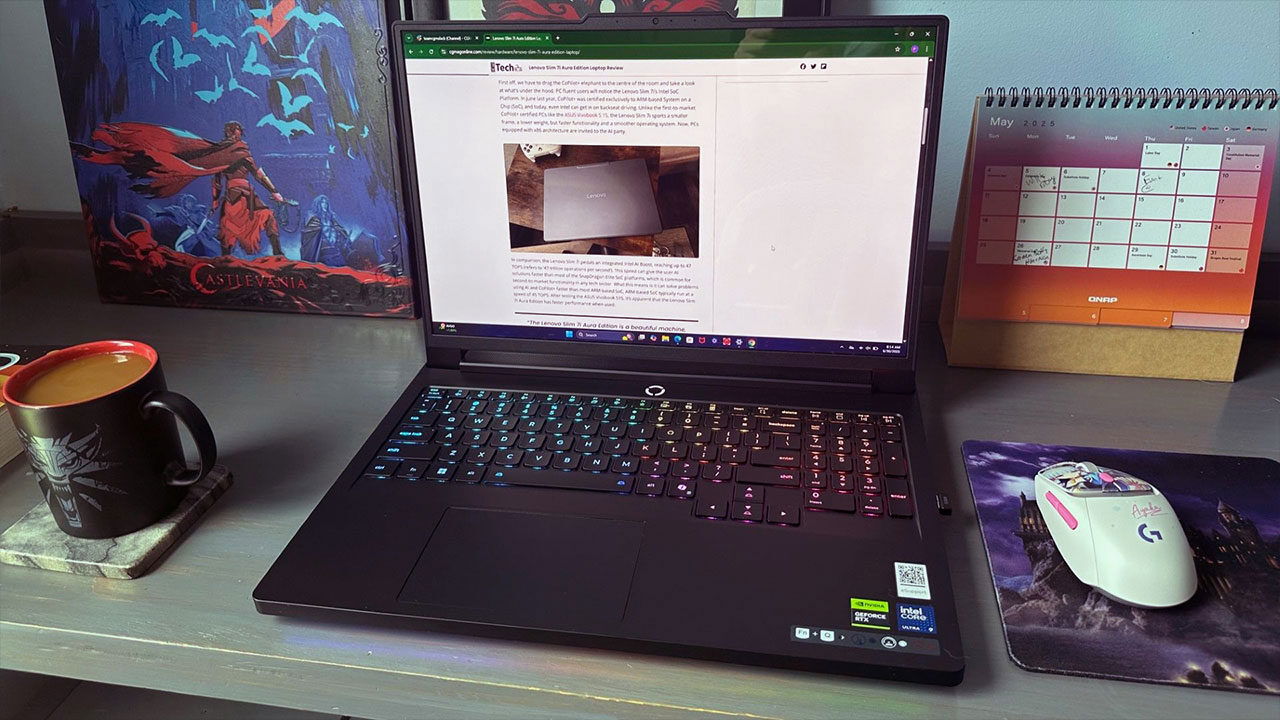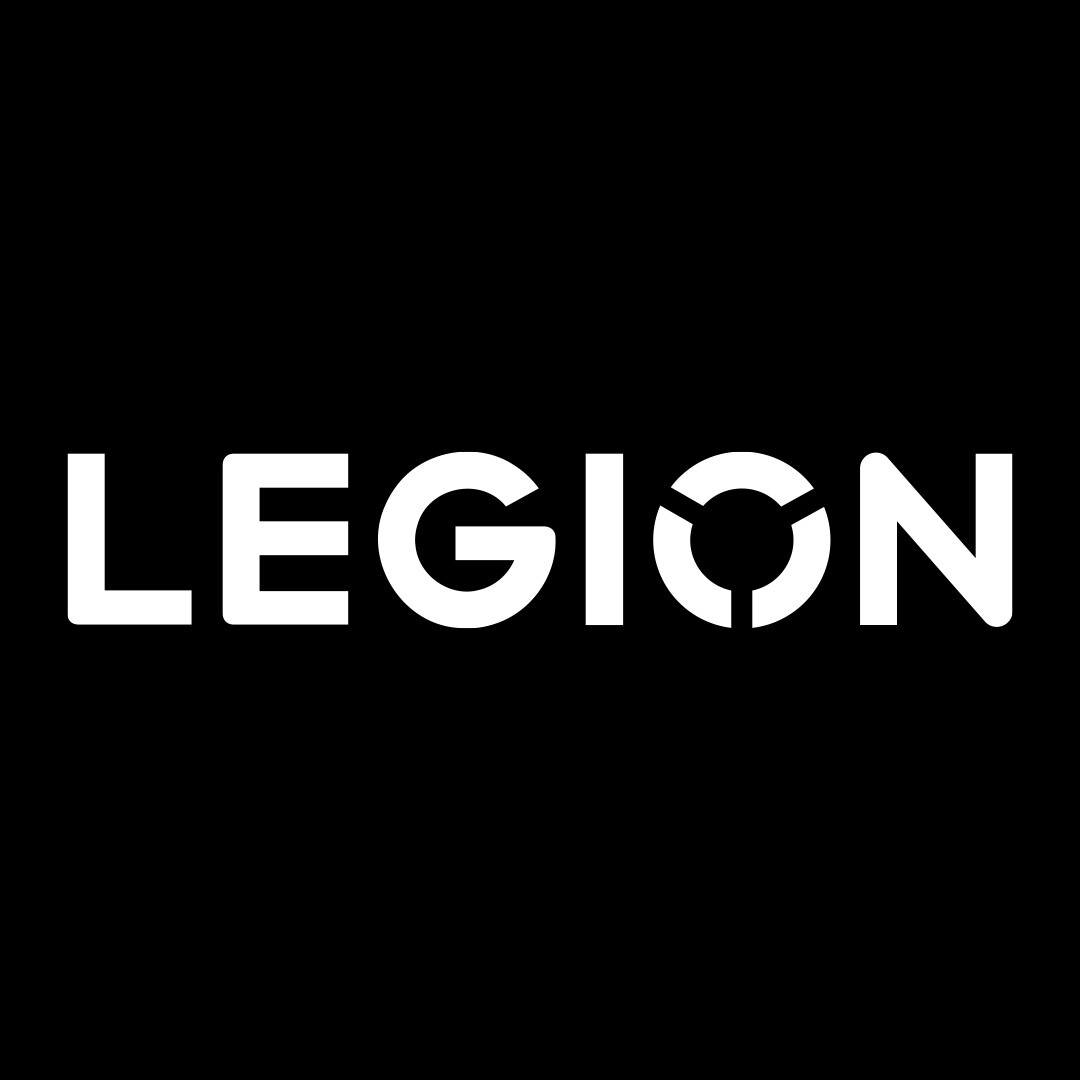Lenovo is known for delivering quality and redefining style in the gaming laptop world, and the same can be said about the latest edition of the Lenovo Legion Pro 7i. Each year, Lenovo refreshes its gaming laptop line, and with the Lenovo Legion Pro 7i 1616IAX10H Gaming Laptop, they’ve done it again. This time, they’ve packaged a sleek aluminum chassis with upgraded CPU and GPU components, added more power to the Legion line, and loaded up on CoPilot+ functionality—for better or worse.
First things first—if you haven’t been introduced to the latest Intel Ultra 9 processors, it’s time for a crash course to understand why this gaming laptop isn’t just another +1 to the product number. Beneath the polished aluminum shell sits the Intel Ultra 9 275HX processor—just 10 shy of Intel’s top-tier 285HX. This latest chip features a built-in neural processing unit (NPU), which allows the Lenovo Legion Pro 7i to take full advantage of multi-core functionality, making it a dream machine for serial multitaskers.
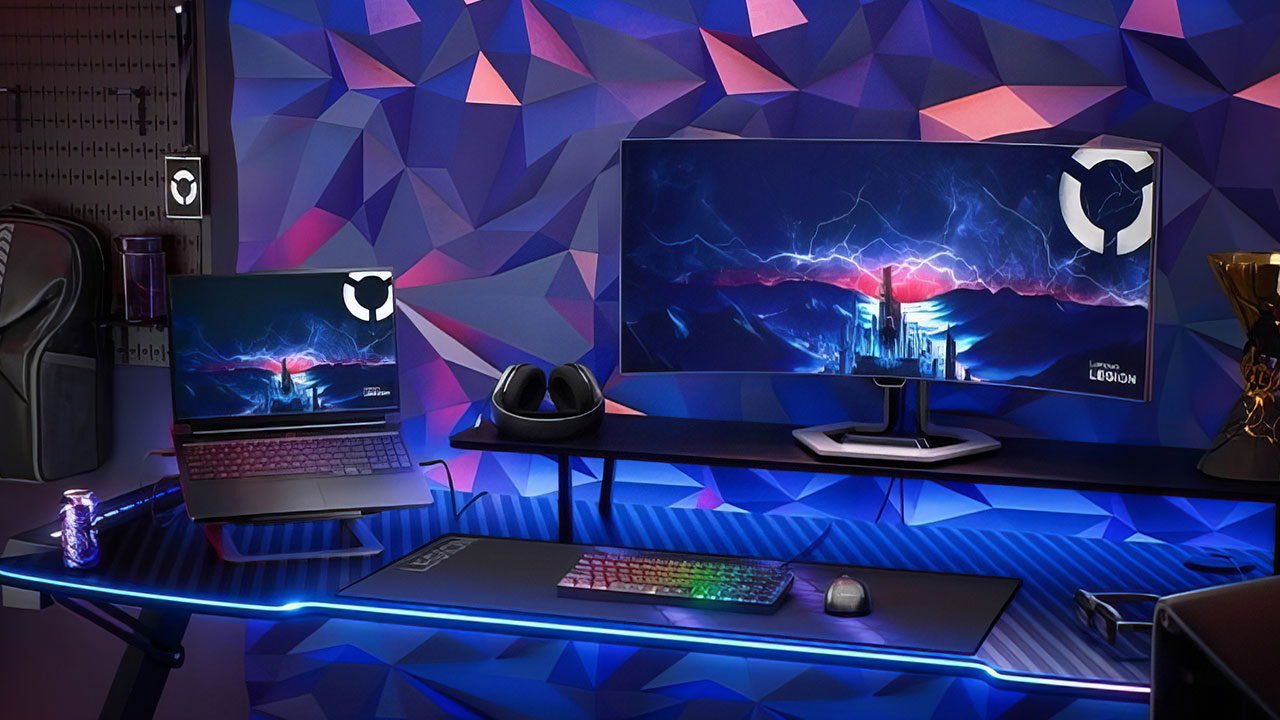
The 275HX processor excels when handling AI-powered features like real-time translations, background noise cancellation and on-device video upscaling. But where it really shines is doing all of this while managing multiple background tasks. With the Intel Ultra 9 275HX, users can thread any needle—or multiple needles at once—thanks to strong multicore performance. Intel says the Ultra 9 275HX offers roughly 25 percent faster multi-threaded performance and 11 percent faster single-threaded performance compared to the Intel Core i9-14900HX. That’s serious firepower, especially considering these Ultra 9 chips are viewed as the crown jewels of the Arrow Lake H series.
“The Lenovo Legion Pro 7i is a force of nature.”
After freeing the Lenovo Legion Pro 7i from its packaging, it was hard not to be impressed. The entire laptop is wrapped in a sleek aluminum chassis that outdresses everything else in the room. Unlike smaller Lenovo laptops, the Legion Pro 7i comes with a massive 400W charging brick that isn’t compatible with other devices. While it was nice to use the Lenovo Slim 7i charger with anything sporting a USB-C port, it’s clear this machine carries far more power than its smaller cousin—and needs the wattage to match.
Learning from its lighter siblings, I’m pleased to report the four directional arrow keys are all the same size, easy to find and have their own little alcove separate from the rest of the keyboard. It’s a big step up from the cramped layout on Lenovo’s smaller models, with enough room for each key to stretch out.
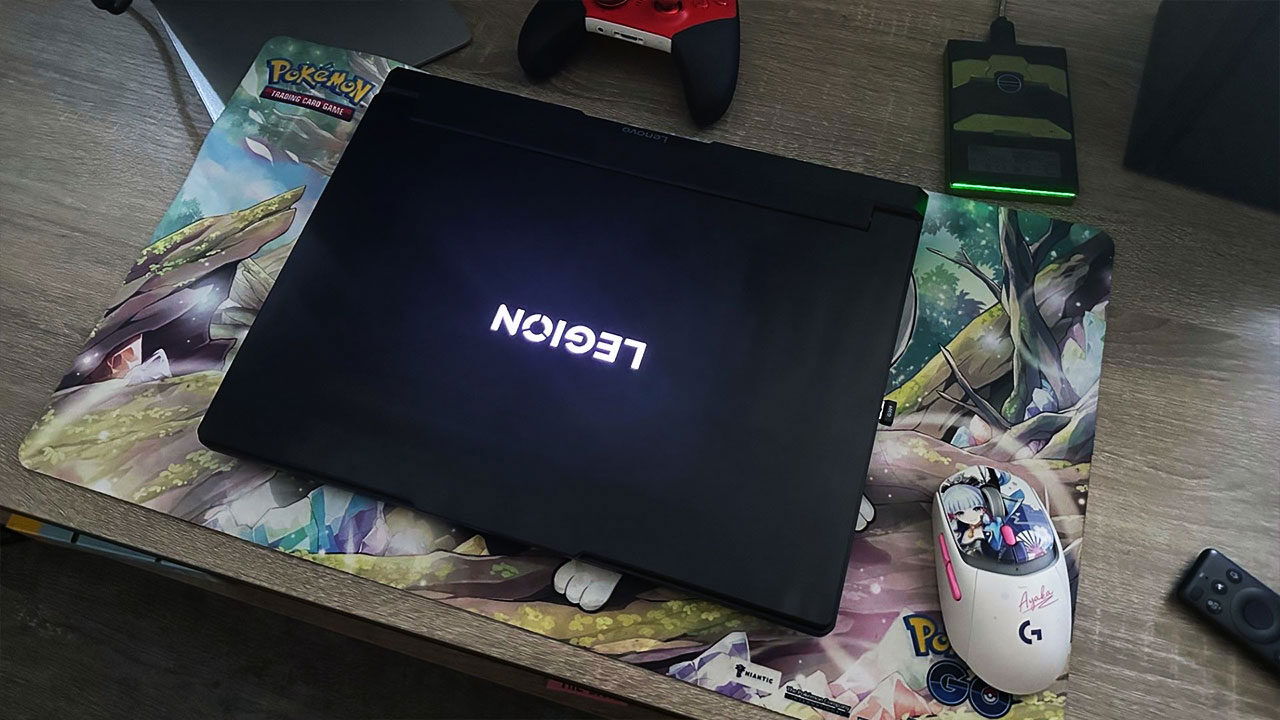
The keyboard offers a springy response when struck—like Sylvester Stallone in any Rocky film, each key seems to bounce back stronger every time. You can use the Legion Pro 7i in the dead of night thanks to its customizable RGB backlit keyboard, and the keys barely make a sound whether you’re tapping gently or hammering with purpose. It’s basically a cheat code for late-night work without disturbing anyone else in the house. Of all the changes Lenovo made with the Legion Pro 7i, the keyboard layout and structure are standout improvements. Even the touchpad is aligned with the space bar—which just feels right.
Weirdly, the shape of the Lenovo Legion Pro 7i might be the most puzzling part of its overall design. The display follows the same styling as other models in the Legion Pro lineup, featuring a 16:10 aspect ratio and a stunning WQXGA (2560 x 1600) resolution. The refresh rate hits 240Hz—likely faster than the user. While those two features are excellent, what isn’t is the awkward “elbow” jutting from the base of the chassis, making the laptop look more like a box than you’d expect. This 2024 revision also comes with a much less efficient body-to-screen ratio, especially below the display, where there’s more empty space than screen.
On other gaming laptops (looking at you, Helios Neo), this awkward extension is often used to house additional ports—adding utility to an otherwise clunky design. That’s not the case here. On the Lenovo Legion Pro 7i, it’s just a massive vent with some RGB accent lighting. Don’t get me wrong, the sci-fi look still holds up—it has the same striking, extraterrestrial vibe the Legion line is known for—but it makes sliding the thing into a shoulder-strap laptop bag a real hassle. Thankfully, it fits just fine in more structured, turtle shell–style backpacks.
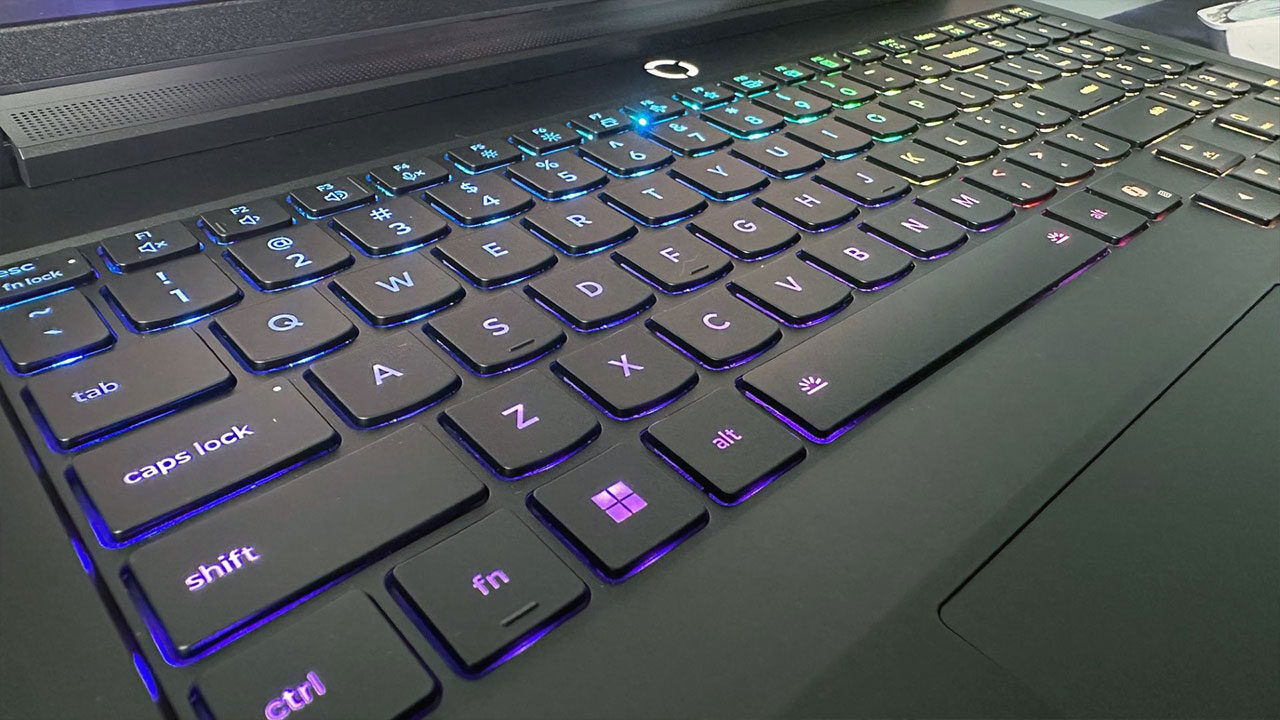
Speaking of ports, the Legion Pro 7i offers fewer options than some other laptops in its class. The lineup includes two USB-A 3.2 Gen 1 ports, one USB-A 3.2 Gen 2 port, one USB-C port with Power Delivery and DisplayPort 1.4 support, and a Thunderbolt 4 port (an odd choice, given Thunderbolt 5 is now available) that also supports DisplayPort 1.4. Rounding things out are an HDMI 2.1 port, an Ethernet jack for direct high-speed connections, and a combo headphone/microphone jack for anyone still rocking a 2.5mm audio setup.
“After launching Xbox Game Pass, the Legion Pro 7i outperformed the Xbox Series X—by a fair margin.”
It’s a questionable decision to omit extra ports on the back of the laptop, especially considering previous entries in the Lenovo Legion Pro series included them. When comparing the Lenovo Legion Pro 7i to the Lenovo Legion Pro 5i, the latter uses its rear panel more efficiently—it’s baffling why this functionality was removed.
On the plus side, after extended use, the laptop stays relatively cool. That said, the fan does kick up a fuss when the system is under pressure. As far as presentation goes, Lenovo remains second to none in making its products look sharp, and with dimensions of 14.35 x 10.86 x 0.86–1.05 inches, the Legion Pro 7i is no exception. But make no mistake—the Legion Pro 7i is heavy.
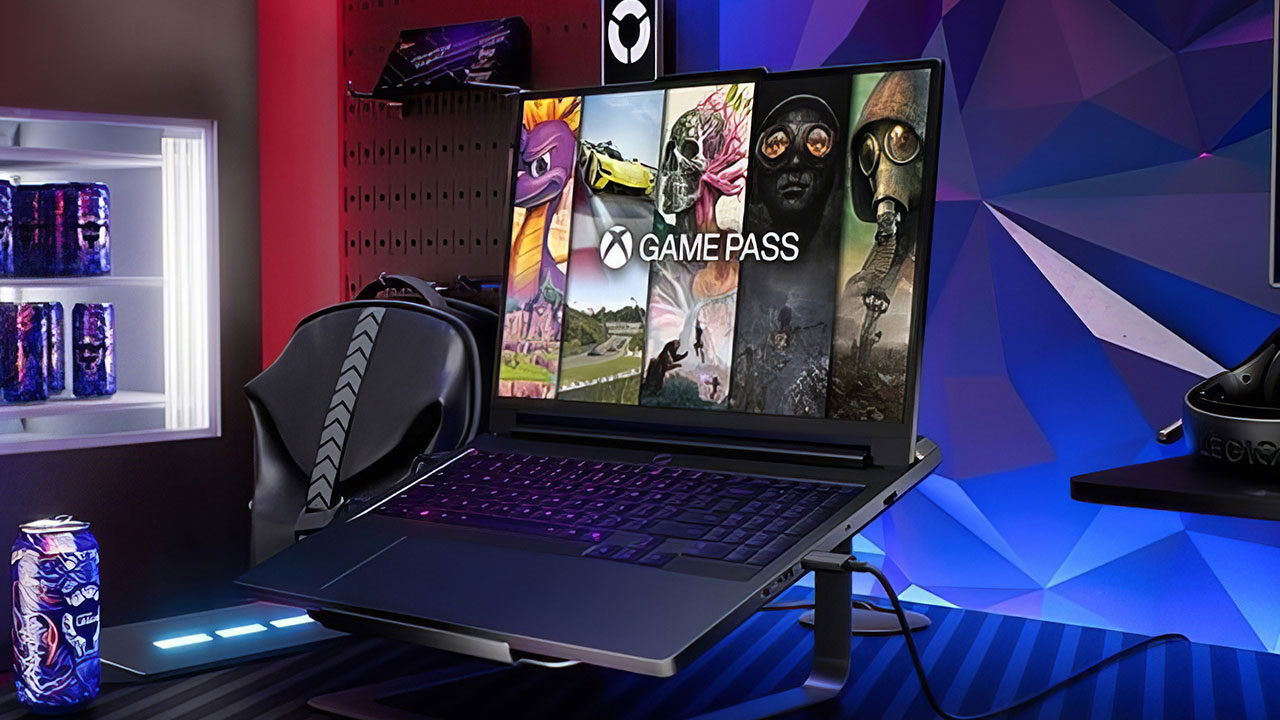
At six pounds, it’s within the average range for a gaming laptop, but it feels heavier than expected due to the back-weighted frame. It’s a beautiful device, with an RGB “LEGION” logo stamped across the lid, but its aluminum chassis picks up smudges at the slightest touch. You’ll want to keep a cloth nearby if you care about appearances.
But how does it handle games? I’m happy to report it blasts through most titles with ease. After launching Xbox Game Pass, the Legion Pro 7i outperformed the Xbox Series X—by a fair margin. Every game I ran through Xbox’s Cloud Beta played more smoothly and consistently than on the console. Final Fantasy XIV streamed effortlessly during its opening segments, while the Xbox Series X showed notable stutter and a drop in resolution.
When not using Xbox Cloud Beta, the Legion Pro 7i pulls away from even the PlayStation 5 Pro. When prioritizing visuals over performance, the Lenovo Legion Pro 7i is the best-performing mobile CPU I’ve used to date. Path of Exile II ran at a steady 60 FPS with visuals sharp enough to count leaves in the background. Notably, when comparing Final Fantasy XVI across all three systems, the laptop ran “Quality Mode” right alongside the PlayStation 5 Pro, while less powerful consoles—and non-gaming systems like the Lenovo Slim 7i and Xbox Series S—struggled with ray tracing and high-quality visual modes.
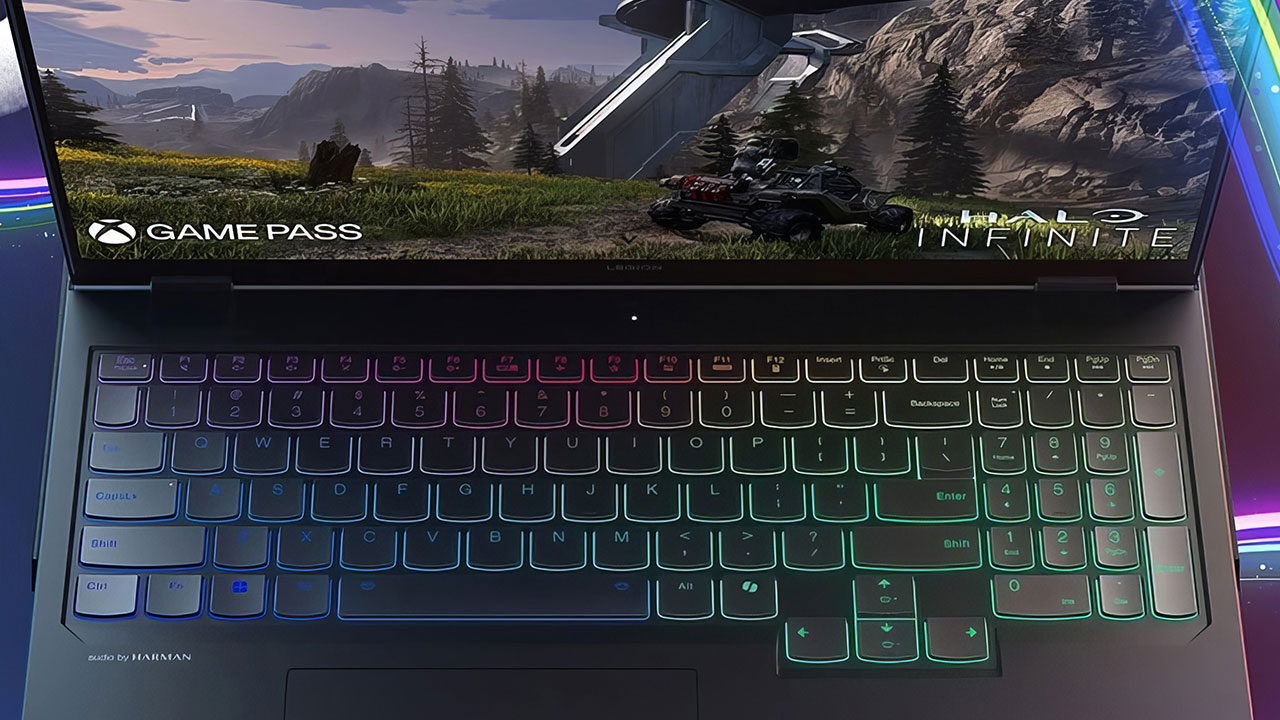
I’m not going to lie: the Lenovo Legion Pro 7i outperforms most stock desktops when it comes to gaming. With its onboard NVIDIA GeForce RTX 5080 Laptop GPU, secondary Intel graphics chip and Intel Ultra 9 processor, this could be the best console in your house without even trying. Forza Horizon 5 hits differently on the Legion Pro 7i—Mexico’s digital twin has never looked better.
“When prioritizing visuals over performance, the Lenovo Legion Pro 7i is the best-performing mobile CPU I’ve used to date.”
Battery life, however, is a weak point. When using the device on high settings and running two tasks—such as Netflix and GeForce Now—at once, the battery crumbles under pressure. At full charge, I received a low battery notice after about 110 minutes. To offset the standard 80W battery (an industry norm that’s less efficient than the one tested), Lenovo’s Super Rapid Charge system works like magic.
After draining the battery, plugging in the laptop brought it back to full charge faster than watching an episode of Squid Game. By the end of the episode, the battery was back at 100 percent. For reference, the model I tested used the 99.9W battery, which will last longer than the base configuration. Still, if you’re away from an outlet, you’ll need to keep an eye on your charge.
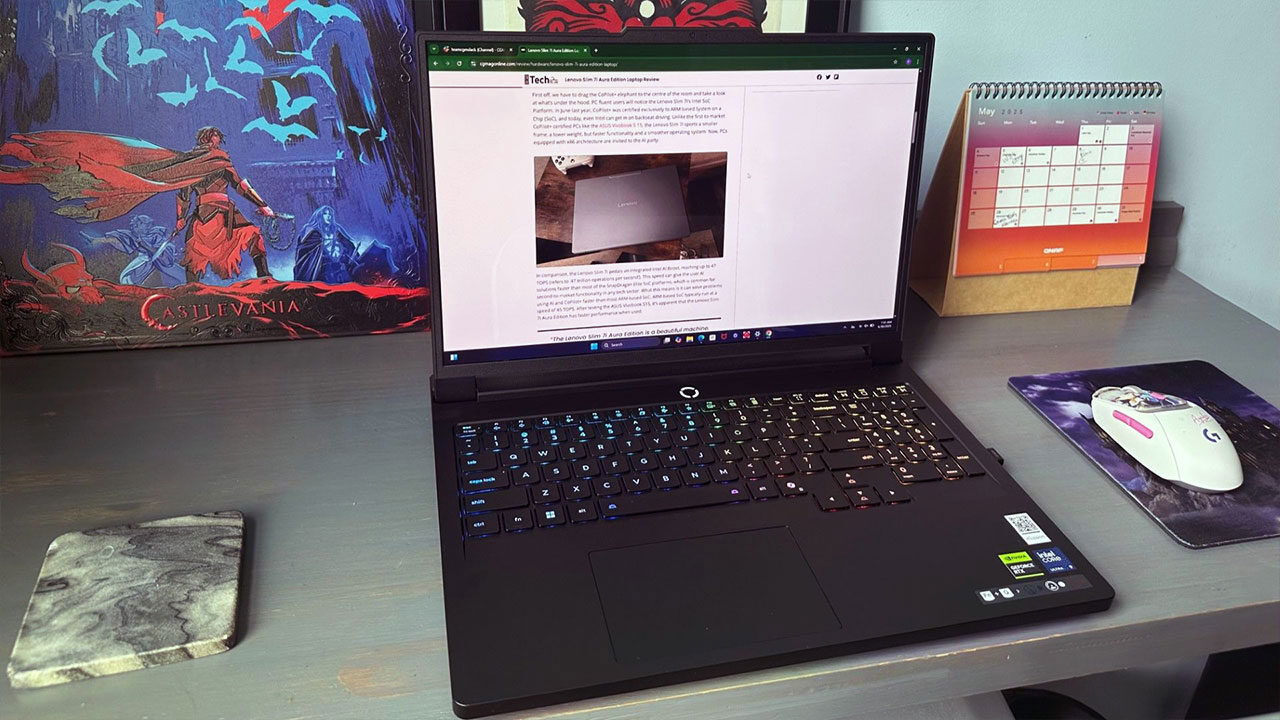
The Lenovo Legion Pro 7i is a force of nature. It powers through demanding content creation tasks, handles reviews (like this one), and still lets you jump into a Dune: Awakening Landsraad event without closing tabs—so long as you’re near a wall plug. Despite a few design quirks, like the smudge-prone chassis and the missing rear ports, the Lenovo Legion Pro 7i is a strong upgrade for anyone ready to retire their old gaming PC.
